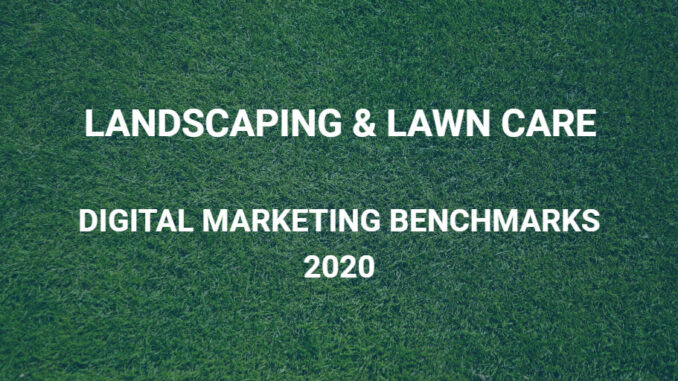
As a niche marketing agency, our biggest asset is the access we have to data.
We manage Google Ads and Google Analytics accounts for landscaping and lawn care companies throughout the whole U.S. of A. I get tired of saying it, but it’s important to explain why this matters so our clients and the businesses checking us out understand what we do and how it works.
Individual landscaping and lawn care businesses have an unavoidable disadvantage when it comes to advertising — they’re limited to the size of their market. Unless they serve the entire United States (or any English speaking country), they will never be able to optimize their digital marketing efforts as fast and as thoroughly as we can.
Services vary from business to business, but the keywords for those services don’t change too much other than the cities they serve. We know that “landscaping services in fort worth” and “lawn care in omaha” are good searches to target. You can swap out the city with your location, and although it’s a little more complicated than that, that’s fundamentally what we do.
The same logic applies beyond keywords. We can combine numbers from all of the businesses for which we market to determine healthy averages. When one of our clients is doing better than average, that’s awesome. When they’re doing worse, we research why — maybe their market is more competitive, or a new competitor is spending money recklessly on Google Ads and will probably disappear next month, or maybe we missed something and need to focus on improving it.
The “problem” with publishing this data is, well, it’s ours. It’s biased to our way of doing things. It isn’t representative of ALL landscaping and lawn care businesses, which means:
There are some things I can explain about Google Ads without mentioning COVID, so I’ll do that first.
The increase in clickthrough rate is best explained by what I said at the beginning of this article. Our overall strategy is a snowball rolling downhill: CTR increased because we were able to take what we have learned from other accounts and apply them to new accounts from the start. This means better ad messaging, more negative keywords, and other nerd stuff that I mostly keep to myself.
Unfortunately, cheap clicks don’t matter unless they turn into leads.
Conversion rate dropped a lot, causing the cost per conversion to shoot up. Consumers got scared. As everyone adjusted to their new normal, we started to see the gap in performance compared to last year shrink. People started prioritizing their homes. Fertilization, hardscapes, etc.
Things are better now, but COVID clearly left a clear scar on our numbers. We’ll see what happens this year.

Leave a Reply